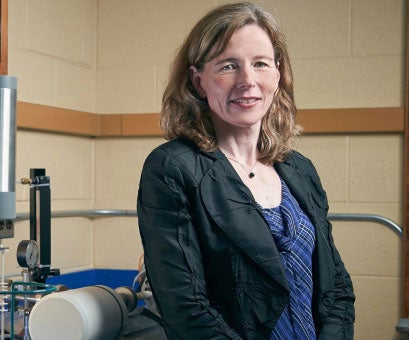Mary Wells, Waterloo Engineering's associate dean of outreach, takes a look at the many reasons women are under-represented in “tech-sector” engineering disciplines in a TechCrunch article published March 15 entitled Engineers bridge the divide between technology and society.
Many women, as studies have shown, prefer to enter professions where they can have a beneficial impact on people and society," says Wells, a Waterloo mechanical and mechatronics engineering professor and chair of the Ontario Network of Women in Engineering.
"This preference affects the STEM (science, technology, engineering and math) fields in many ways, and partially explains why engineering disciplines, which have obvious societal benefit such as biomedical

Wells, pictured in her engineering lab, says that children and youth have not been getting the right message about the societal value of engineering. Without a better understanding at a young age of what engineers “do” for society, they are unlikely to make the educational or personal choices that lead to an engineering career path.
New narratives needed
"I see this disconnect about engineers’ societal value on a regular basis. My team and I at the University of Waterloo in Canada run one of North America’s largest engineering outreach programs. We conduct programs for local elementary and high schools, so we see firsthand what our youth think of engineering.
Ask girls in grade 4-6 what an engineer does and there is a good chance she will draw you a man in overalls and a cap, driving a train. Yet ask her what a doctor or teacher does for a living, and she will draw capable women with stethoscopes helping patients or reading to children. However, after they spend even a few hours with Waterloo engineering students, these girls develop a new perception of engineers based on this new narrative, as the pictures below illustrate."
